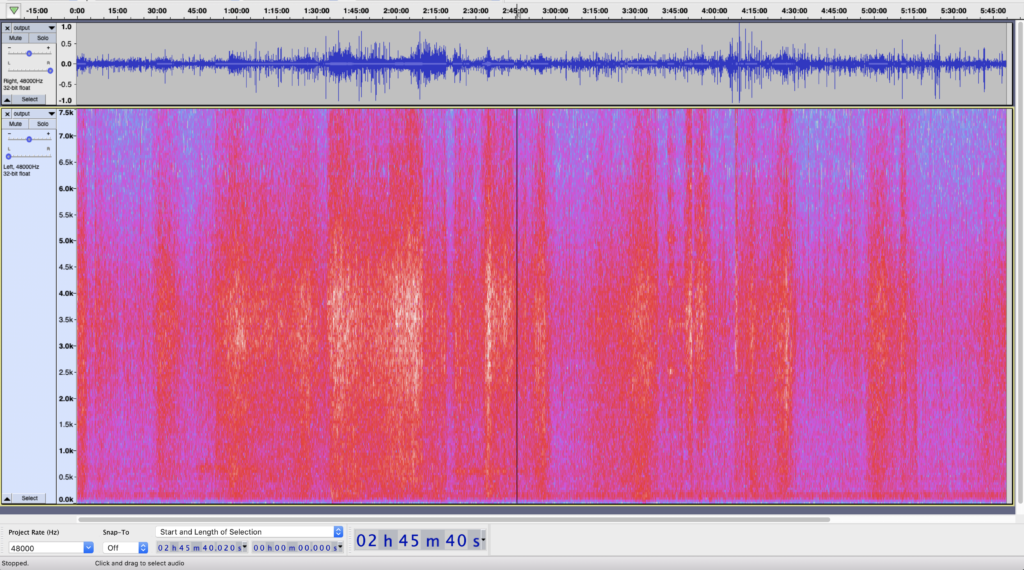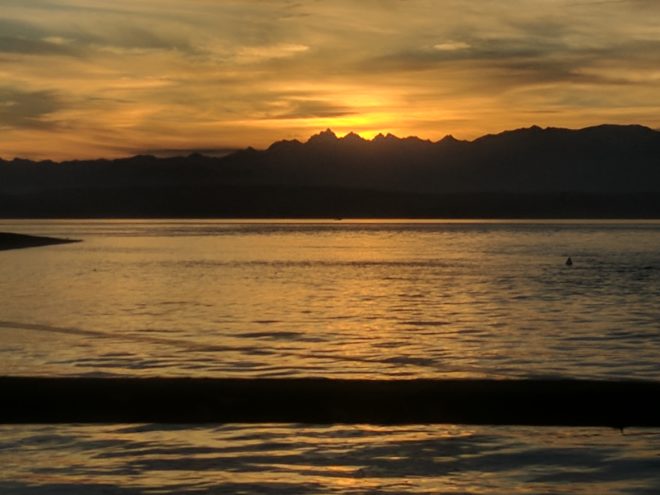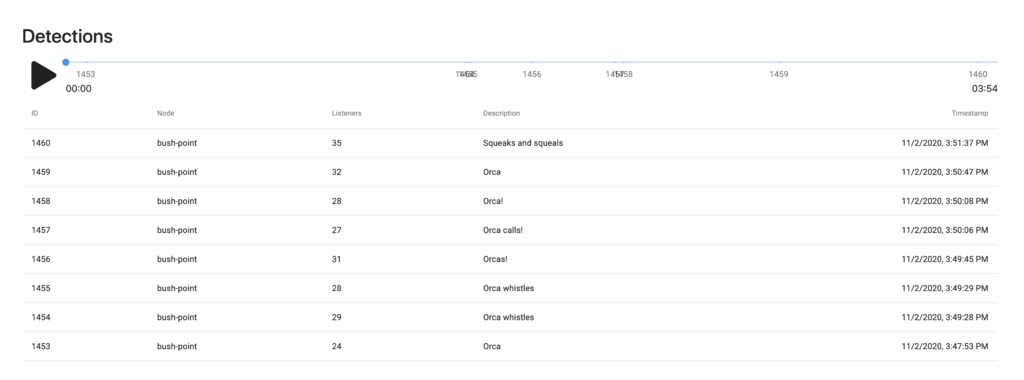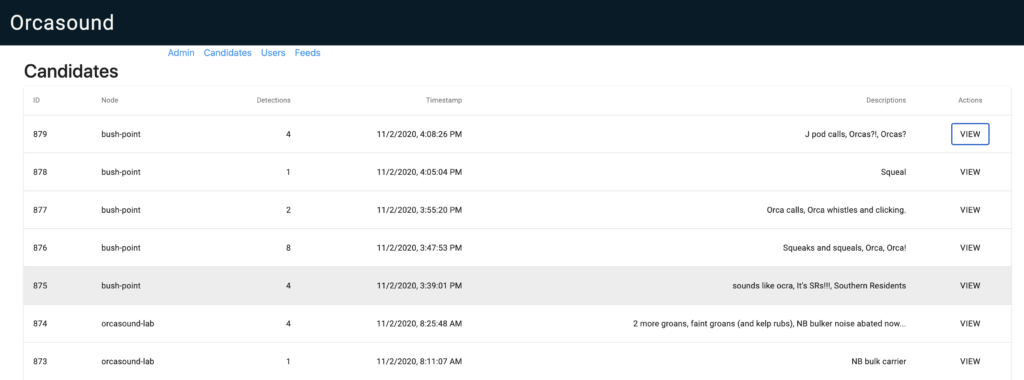With no warning from her sighting network, Susan Berta of Orca Network was first to hear the Southern Resident Killer Whales return to Puget Sound this afternoon (Monday, 02 Nov 2020). She heard them first around 15:40 through the live hydrophones that Orca Network hosts and which are deployed under the outer wharf of the Bush Point B&B.
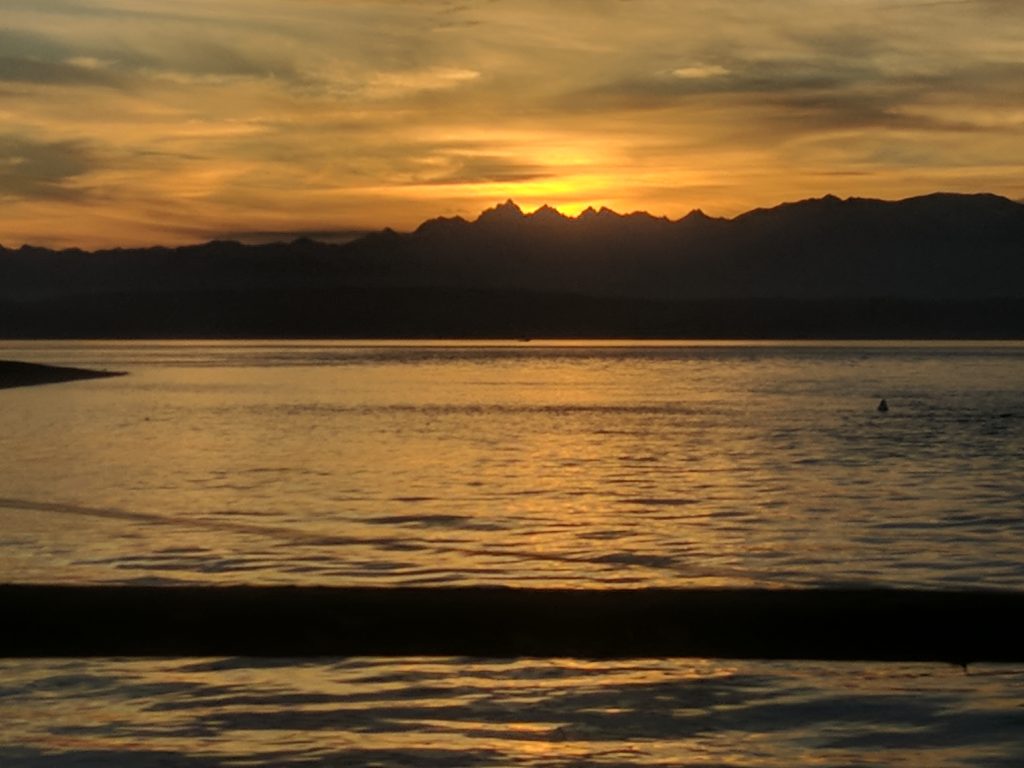
This is what they sounded like during a particularly interesting minute of the 1.25-hour-long event:
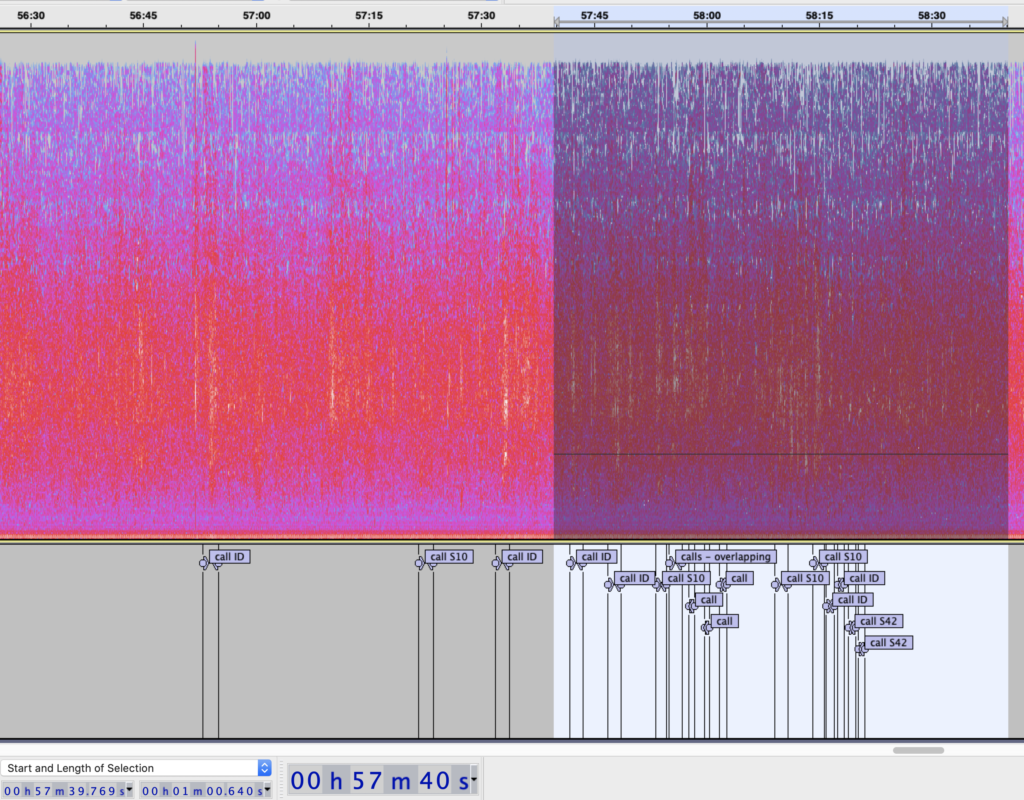
Real-time detections by citizen scientists
Overall, the Orcasound listening network did a great job of detecting J pod in real-time, and of labeling the live audio using the “I hear something interesting” button in the live web app — https://live.orcasound.net/bush-point
Here’s what the logged labels looked like:
Bush Point recording analysis
Bush Point 6 hour recording session start date/time:
- Unix time stamp (bush_point bucket location): 1604341835
- GMT: Monday, November 2, 2020 6:30:35 PM
- Your time zone: Monday, November 2, 2020 10:30:35 AM GMT-08:00
- Duration into archive of first signal: 4 hours 25 minutes
- Start time of acoustic bout: 14:55
- Duration into archive of last signal: 5 hours 40 minutes
- Start time of acoustic bout: 16:10
- Duration of bout: 1 hour 15 minutes
Full recording (1 hour, 15 minutes)
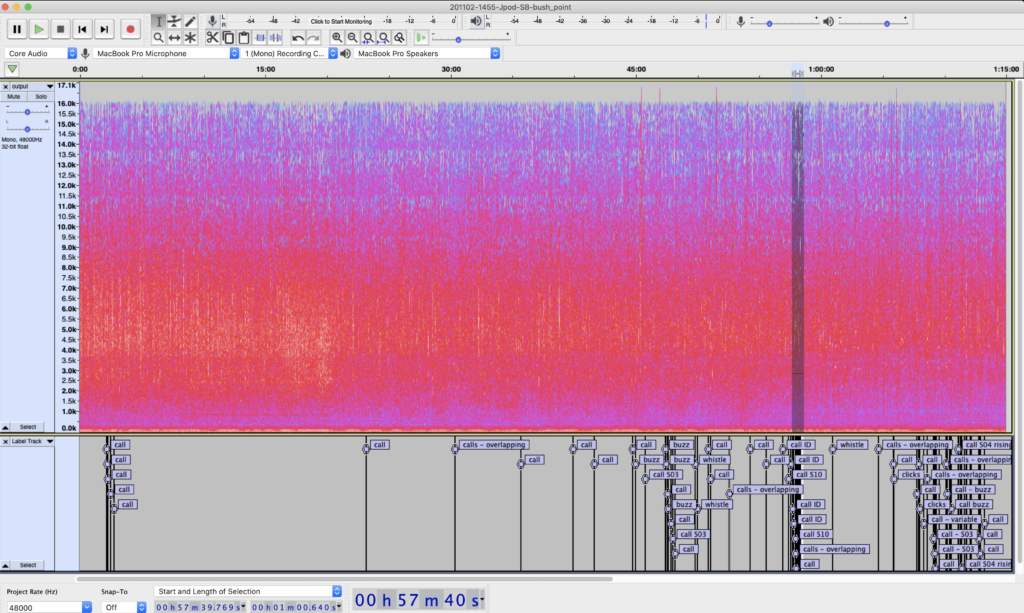
This recording is noteworthy for a few reasons:
- It’s an acoustic detection of the entrance of J pod into Puget Sound for the fourth time this fall
- There are some interesting rising buzzes (that almost seem like S04 calls)
- There are quite a few examples of overlapping calls (indicating that multiple individuals were calling at the same time)
- Many S10 calls were recorded, including some possible variants?
- There were a wide variety of call types recorded, including many S03s, S04s, and at least a couple S42s.
- Whistles and click sequences were also audible
Congratulations and thanks again to the team that keeps the Bush Point hydrophone operational! It was an amazing event and a much higher-recording than we would have gotten prior to Lon’s latest fix which secured the hydrophone deeper and in a way that is less prone to flow, surface, and wave noise. Luckily the tide was relatively high, which generally makes for better listening (and greater detection range) due to the hydrophone being further from the surface noise made by waves, wind, and rain.
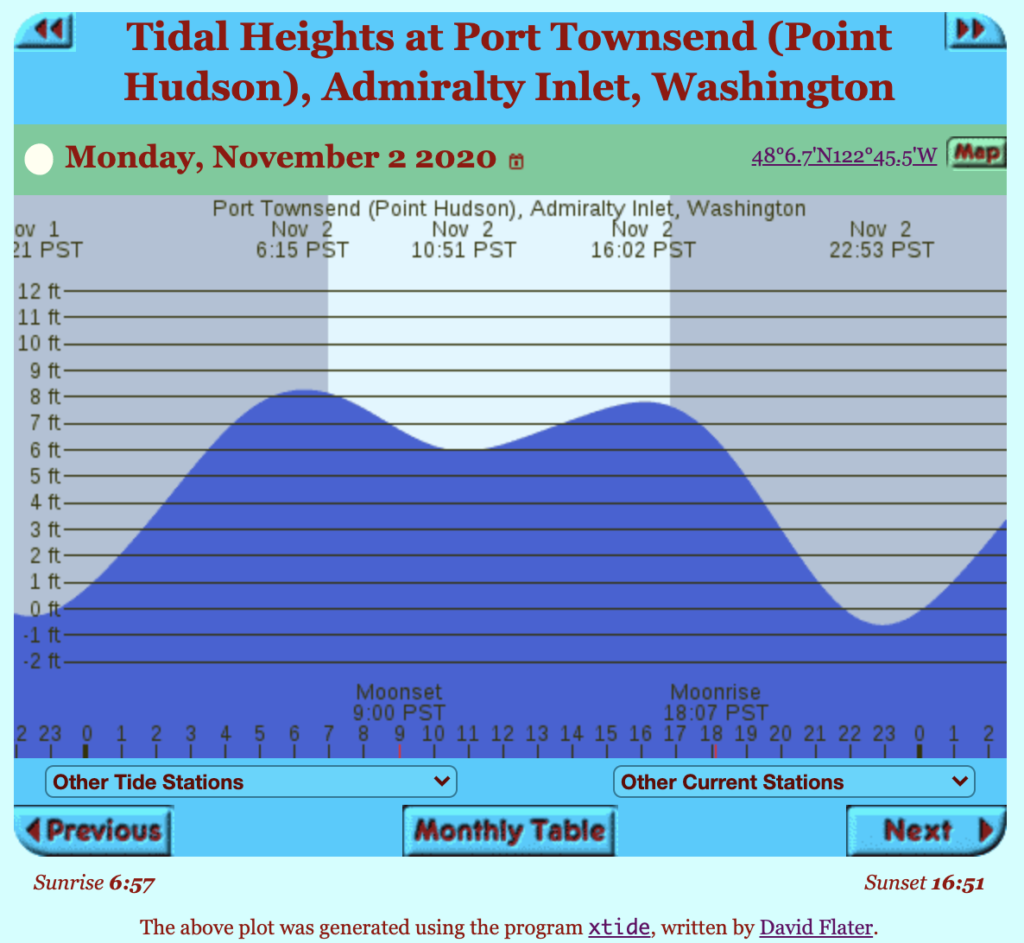
Port Townsend recording analysis
After learning from Orca Network’s visual observations before the sun set of southward movement, we retrieved the 6 hour recording from Port Townsend to see if the SRKWs were audible there earlier in the afternoon. Unfortunately, there was either too much vessel noise, or the calls from J pod were too faint to be heard during the quiet periods between passing ships and boats. No signals were observed visually and in listening to promising patterns in the spectrogram, no calls, whistles, or clicks were heard. Instead there were only frequency modulations from outboards changing speed and clicks from the typical clattery noise of the Washington State ferry. This may suggest that J pod was on the far side of the Inlet (close to the Whidbey Island shoreline as they came in from the Strait of Juan de Fuca.
- Unix time stamp (bush_point bucket location): 1604341825
- GMT: Monday, November 2, 2020 6:30:25 PM
- Your time zone: Monday, November 2, 2020 10:30:25 AM GMT-08:00
